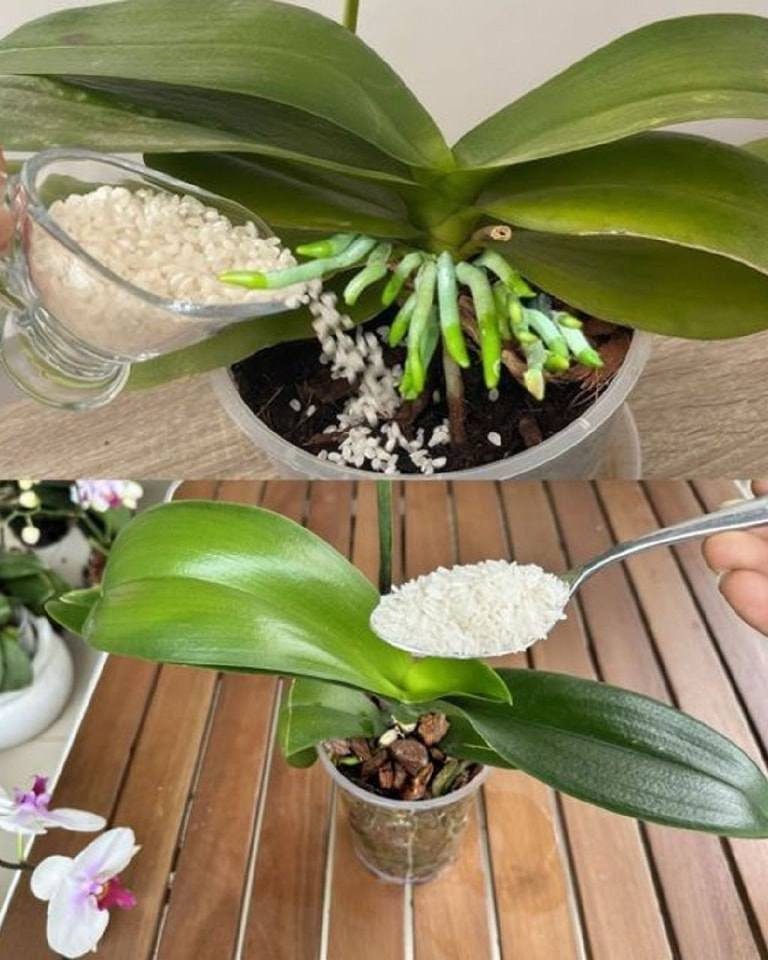ADVERTISEMENT
#### 1. **Choose the Right Fertilizer**
Selecting the right fertilizer for your orchid is essential. You can opt for:
– **Liquid Fertilizer**: Easier to apply, and it absorbs quickly into the roots.
– **Slow-Release Fertilizer**: This gradually releases nutrients into the soil over time. It’s a great option if you want to ensure a steady supply of nutrients.
– **Orchid-Specific Fertilizers**: These fertilizers are specially formulated for orchids, typically containing the right proportions of nitrogen, phosphorus, and potassium to promote flowering.
Look for a fertilizer that is specifically designed for orchids, as these are usually formulated to provide the right nutrients for their unique needs.
#### 2. **Dilute the Fertilizer**
Orchids are sensitive to over-fertilization, which can harm their roots. To avoid this, **always dilute the fertilizer**. Typically, the instructions on the fertilizer bottle will suggest a specific ratio for dilution. For liquid fertilizers, a general guideline is to use about **one-quarter to one-half strength** of what the manufacturer recommends for other plants.
#### 3. **Apply Fertilizer During the Growing Season**
The growing season for most orchids is **spring and summer**. During this time, your orchid will benefit from more frequent fertilization. You should fertilize **once a week or every other week** during these active growth months. This will give the plant the nutrients it needs to produce vibrant flowers.
#### 4. **Adjust Fertilization in the Dormant Phase**
In fall and winter, most orchids enter a period of dormancy or slower growth. During this time, the plant doesn’t need as much fertilizer. Reduce fertilization to once a month or even stop it completely until the orchid starts to show signs of new growth again in the spring. This rest period is crucial for the orchid to prepare for the next blooming season.
#### 5. **Apply Fertilizer Correctly**
To apply liquid fertilizer, follow these steps:
– **Water your orchid thoroughly** before applying fertilizer. This helps prevent fertilizer burn, as dry roots can be sensitive to concentrated nutrients.
– Once the plant is watered, use a watering can to apply the diluted fertilizer to the soil or growing medium. Be sure not to let fertilizer sit on the leaves or flowers to avoid burns.
– **Avoid getting fertilizer on the flowers**. Fertilizer on petals can cause discoloration and damage.
#### 6. **Consider Foliar Feeding**
In addition to root fertilization, **foliar feeding** (spraying fertilizer directly on the leaves) can also be an effective way to provide nutrients to orchids. Mix a diluted liquid fertilizer with water and spray it lightly on the orchid’s leaves. This method allows the plant to absorb nutrients directly through the leaf surface, providing a quick boost.
#### 7. **Flush the Soil Occasionally**
Over time, fertilizer can build up in the potting medium, causing salt deposits that could harm the orchid. To prevent this, it’s a good idea to occasionally **flush the potting medium** with clean water. Simply water the plant generously until excess water runs out of the drainage holes at the bottom of the pot, which helps wash away any accumulated salts.
### Additional Tips for Orchid Care
– **Proper Lighting**: Orchids need the right amount of light to thrive. Too much direct sunlight can burn the leaves, while too little light can stunt growth. Place your orchid in a bright, indirect light area.
– **Humidity**: Orchids love humidity. If your home is dry, especially during winter, consider using a humidity tray or a humidifier to maintain moisture in the air around the plant.
– **Repotting**: Orchids generally need to be repotted every 1-2 years. Repotting gives the orchid fresh growing medium and enough space to grow, which is essential for long-term health and bloom production.
### Conclusion
Fertilizing your orchid is one of the most important steps in ensuring it blooms **profusely and for a long time**. By choosing the right fertilizer, applying it correctly, and adjusting based on the season, you can help your orchid produce stunning, vibrant flowers year after year. Combine this with proper care—like providing adequate light, humidity, and regular repotting—and you’ll have a healthy, beautiful orchid that brightens your home with its blooms.
So, follow these fertilization tips, be patient, and watch as your orchid rewards you with breathtaking flowers that last for months! Happy orchid care!
ADVERTISEMENT
